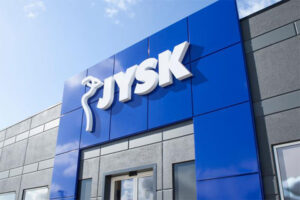By Bruno Moura
Lean is a management strategy which seeks to achieve maximum efficiency via recurrent identification and elimination of nonvalue-creating activities (aka waste) throughout all processes developed by an organization. It aims to implement the simplest and most effective workflows possible by eliminating unnecessary effort, time, materials and motifs, whilst consistently achieving client satisfaction and organizational goals. Simply said: Without producing customer value reducing waste is not Lean.
Software and manufacturing companies have long used Lean principles and methodologies to systematically eliminate waste from their organizations and ensure quick and sustainable learnings into their processes. But what about the shopping center industry? Are we able to systematically eliminate waste from our processes and ensure fast implementation of learnings of our customers’ requests? Customers are ever more in control, so shopping center companies who fail to quickly and accurately predict their demands (and then allocate just the right resources to just the right opportunities) are doomed to fail.
In 2020, a new reality called Covid-19 has a strong impact on every shopping center’s revenue sources. In the mist of all this uncertainty we all had to adapt in a blink of an eye. This was particularly visible when we were required to substantially reduce our activities in our centers and offices and manage a tremendous amount of uncertainty and concerns mostly from home. Nevertheless, since it is in times of crisis that the best of us comes out, this was also a unique opportunity for us in this industry to reflect on the following questions.
What can’t we continue to do?
Unnecessary services or duplicated tasks within processes, departments and the organization, are an effective way to slow down response to the real needs of clients and clutter organizations with bureaucracy, so ideally, they should be removed or minimized. But moving midcourse a ship, as big as ours, takes time and is especially challenging because the people involved are used to working in comfort zones and value their own specific routines. Change requires leaders with the courage to challenge the status quo, but some managers may still tend to sense that “this is all temporary and will pass us by, if we just wait a little longer”. Sensing any famous last words?
Which opportunities are we missing out on?
What is the market implementing that we are not? Are we creating value with our innovation and improvement efforts and are these benefiting our stakeholders? In this evermore digital age, we must be constant testers of new ideas and even faster learners, if we are to grow our market position. Also, by not capitalizing and efficiently rolling out internal best practices we are also limiting the capability to systematically provide a reliable and consistent experience.
What inefficiencies are we digitalizing?
Lean and digitalization are mutually beneficial if first set in their correct order, and digitalization can pave the way for better pulling together across departmental and organizational boundaries. But just because everyone is digitalizing fast and supposedly having quick gains, these opportunities must be analyzed beforehand to ensure that they will create real and sustainable value. Especially during Covid-19, we all needed to be digital and invested hard to be perceived by our customers as such. But we cannot underestimate or overlook the huge benefits of simplifying our processes first. Remember that “there is nothing quite so useless, as doing with great efficiency, something that should not be done at all.”
But how can Lean offer a solution to these and other problems in the future? Lean is a systematic and logical approach to deal and learn from challenges, like Covid-19 and many others, that shopping center developers, owners, and managers face on a day-to-day basis. Despite its many tools, mostly with unusual Japanese jargon associated to it like “Hoshin Kanri, Kamishibai or Kanban”, Lean in its essence is about removing nonvalue-creating activities from processes in a continuous and sustainable manner.
Take the following example: When customers visit our food courts to have lunch, what do they expect next? A pleasant, clean, available table. But can our teams ensure this at any time? Probably not, and since most of us don’t have unlimited resources at our disposal, nor do our customers care about our internal inefficiencies, we end up providing an undesired client experience or even affect negatively their loyalty. So where do we start to fix this issue? Do we pile up on additional temporary resources to ensure clean tables? Do we ask clients to pick up their trays and clean their tables? Should we create signage to indicate where tables are clean and available? Solutions are widely available. But will they solve that problem?
The place where value is created
To solve any problem, Lean firstly (and very correctly) defines the problem to be solved from the customer’s perspective. Not adequately defining “Which problem am I trying to solve?” is the most common setup mistake I see managers making. Our experiences, perceptions and track record mostly help us in normal day to day situations, but for new or reoccurring problems we need to consistently use data and use a structured approach to ensure that we are not taking again and again the traditional route to normality. If not, what we may end up, if the original problem’s root cause is not duly dealt with, is a quick fix of the situation (that takes up precious resources) but that won’t deal with the real problem. Why build up on extra cleaning staff if the customers are willing to take their trays to the cleaning stations?
Going to the “Gemba[1]” and collecting reliable and updated data is the most secure and efficient way for organizations to understand how they are performing in a specific scenario towards client needs, and to identify bottlenecks & problems in their processes’ implementation. Listen to those working in that Gemba and systematically collect their thoughts on why things that problem is occurring (Note: ask for causes, not for solutions. That comes later…). With this real data, and comparing it to client expectations, then “the problem to solved” can start being worked on, by leaders establishing a vision for the future process and then bringing the relevant people on board to quickly implement it.
Nevertheless, Lean management is much more than solving one problem at a time at operational levels. It is mainly about top management creating clarity on the most important problems to be solved by the organization and creating conditions for an army of proficient problem solvers, at all organizational levels, to act quickly, autonomously and effectively. But how to do this?

Making your organizational purpose crystal clear to everyone
From the most operational levels to C-suites, everyone must be aligned towards a common purpose. Senior executives must communicate the short, medium and long-term ambitions of the organization, and how additional value can be created by the teams on the ground. Managers may need to (re)define their priorities appropriately, as to effectively (re)allocate the available resources to this purpose. Asking simple questions like, “Is that what the client wants?” followed by “How do you know?” should set the tone of management conversations with the teams. Only after ensuring enough reliable data on the processes and establishing the appropriate success metrics should action plans (which are necessarily aligned with the needs expressed by top management) be defined. Less is more.
Not making cost reduction a Lean objective nor the Lean method
Make it the Lean result. Despite its very apparent economic, productive, and motivational benefits, reducing costs cannot be the objective of Lean since it will very quickly undermine the cultural principles that are inherent to Lean thinking, like workers contributing with ideas, responding quickly to suggestions for improvement, providing a collaborative learning environment, seeking perfection in every product, service and process, and enjoying the visible support of all employees and leaders.
Ensuring Lean training and coaching…
…to support the adoption of lean principles and sustainability of lean behaviors, because we want proficient people that are frugal with their resources and accountable for their results. Every new hire must be quickly embedded with the organizational purpose and be reminded regularly of it by his team leader, who in turn is reminded by his, and so on. Create conditions for people to make safe mistakes and learn from them by eliminating problem root causes from the organization. Be the humble leader that motivates others and creates conditions for other leaders to emerge.
Spreading information on lean initiatives wide, best practices, and results
Implement simple but focused communication plans focused on sharing learnings with a strong personal perspective and reinforcing the message of employee ownership of improvement efforts. Encourage teams to measure the costs and benefits of the improvements they make, whether they are economic benefits (for example, additional revenue or a reduction in the P&L) or efficiency benefits (like, freeing up time from one task to perform another). Once again, this is intended to reinforce lean behaviors and help the organization to communicate the impact of Lean Thinking using numbers and case studies. To make it easier for anybody to find, manage, track or even rollout their continuous improvements efforts, centralizing this information in a single place accessible to the organization also makes a big difference.
Involving and recognizing to engage everybody in Lean thinking
Everybody should feel empowered to implement change and want to be part of this effort. To further boost and consolidate Lean culture, senior executives must celebrate successes with their teams on a regular basis. Small presents to the leaders of improvement projects, like notepads or cell phone charging cables are pennies for dollars but will be remembered for years.
In sum, it takes time for Lean to produce real effect but setting up a Lean program will safeguard the organizational environment for those who want to change things for the better. People whose vision for the organization is different but have the grit to ensure that our centers are better and safer for our clients. Lean is and will increasingly be a key enabler for future competitive advantages.
[1] Gemba refers to “the place where value is created,” such as the shop floor in manufacturing, the operating room in a hospital, the job site on a construction project or the shopping center’s mall areas.





